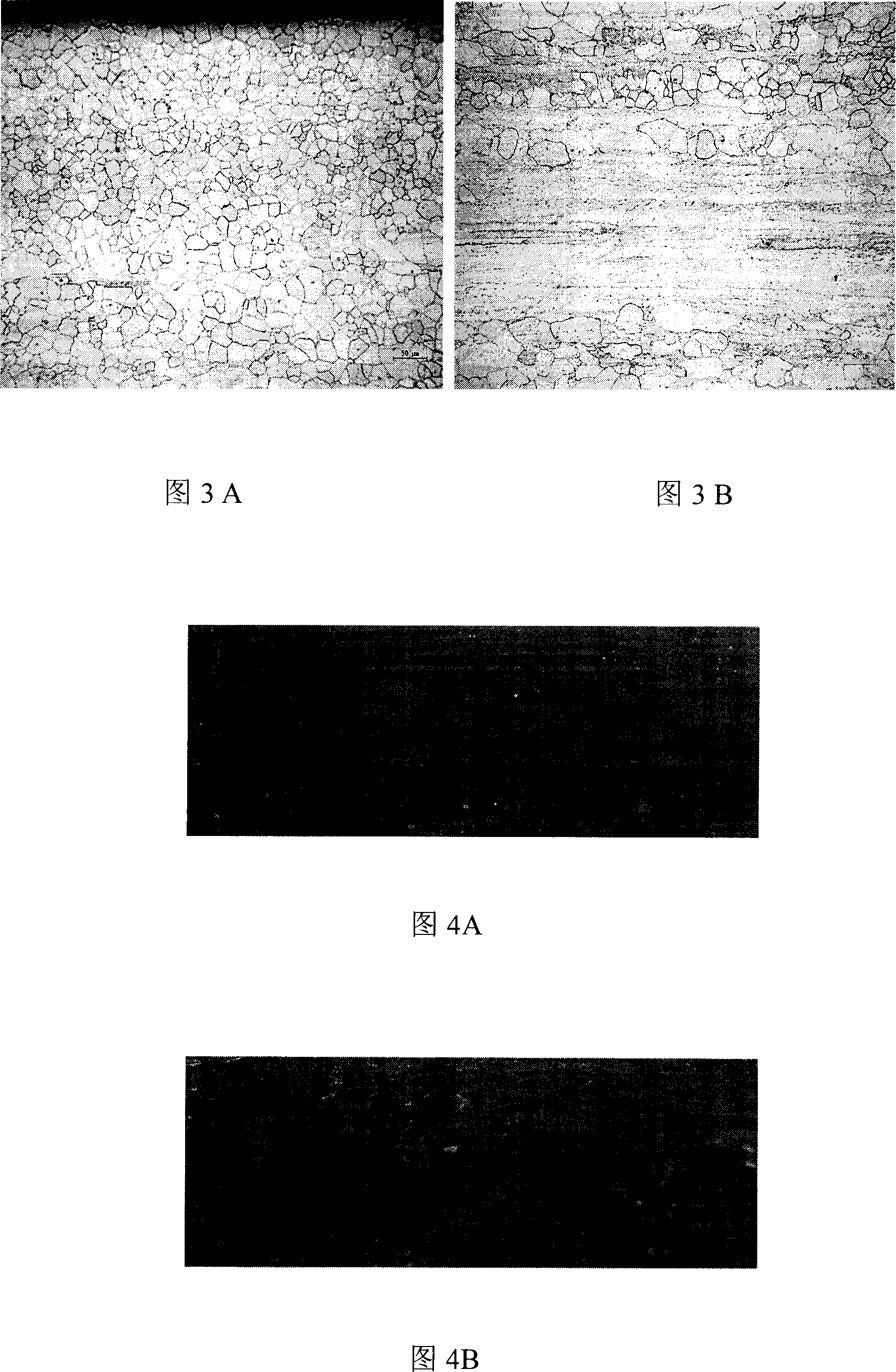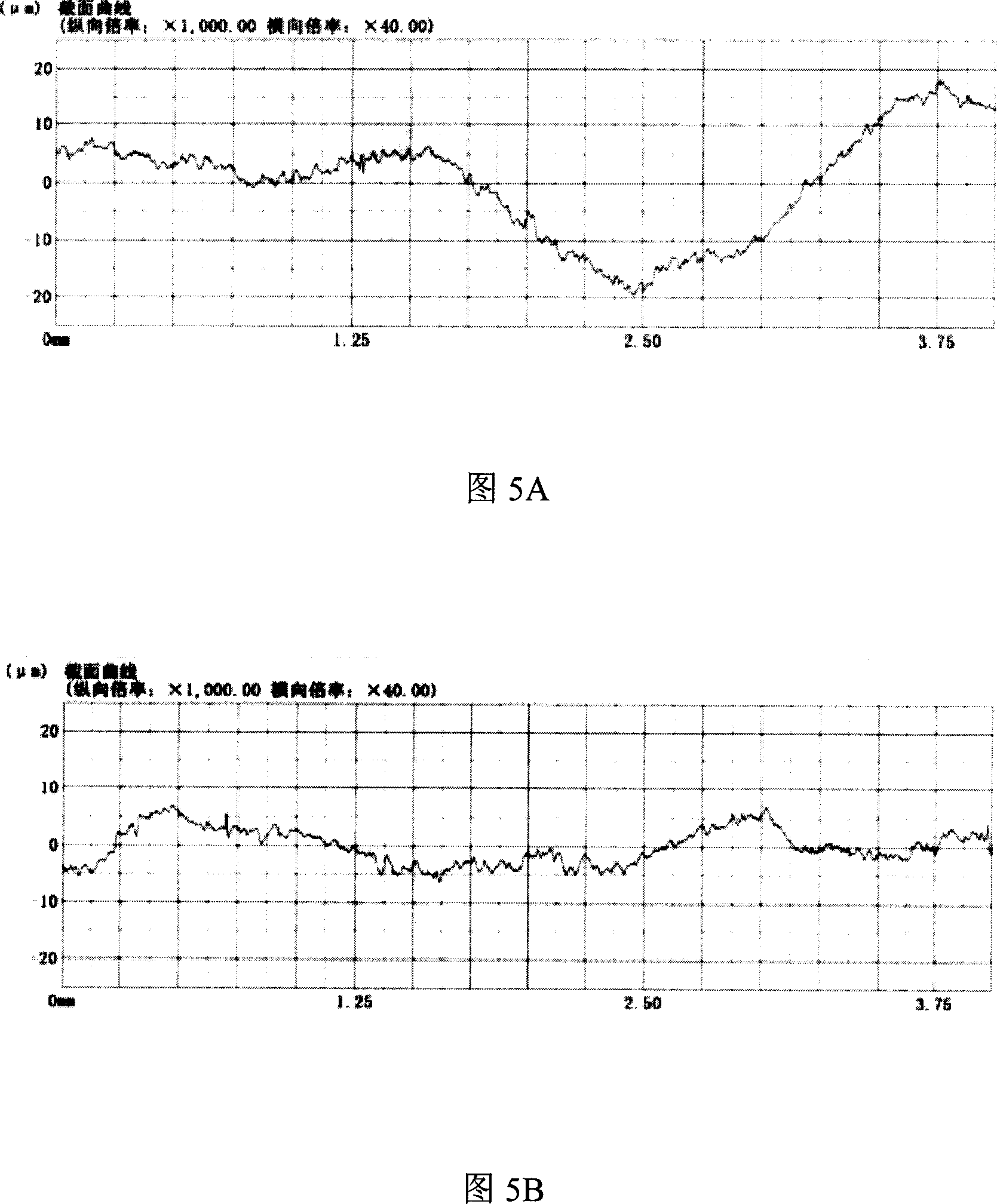Process for producing ferritic stainless steel
A production method and technology of stainless steel, applied in rolling mill control device, heat treatment process control, metal rolling, etc., can solve problems such as serious wrinkle streaks and affect product quality, and achieve recrystallization, production cost reduction, and wrinkle elimination. The effect of streak defects
- Summary
- Abstract
- Description
- Claims
- Application Information
AI Technical Summary
Problems solved by technology
Method used
Image
Examples
Embodiment 1
[0036] Described technological process and parameter are:
[0037] 1) The drawing temperature ET is controlled at 1200°C, the rough rolling exit temperature RDT is controlled at 1100°C, the finish rolling entrance temperature FET is controlled at 1050°C, the finish rolling exit temperature FDT is controlled at 950°C, and the coiling temperature CT is controlled at 800°C;
[0038] 2) The thickness of the cast slab is 200mm, set by the roll gap of the rolling mill, the rough rolling exit thickness is controlled at 50mm, the finish rolling exit thickness is controlled at 2mm-10mm, and the cumulative reduction rate of rough rolling is controlled at 75%;
[0039] 3) Improve the rough rolling process, adjust the relative reduction distribution ratio of the 7 passes, increase the relative reduction rate of the subsequent pass, and distribute the load backward, and control the ratio of the relative reduction rate of the initial pass to the final pass at 0.18 , the relative reduction r...
Embodiment 2
[0047] Described technological process and parameter are:
[0048] 1) The drawing temperature ET is controlled at 1100°C, the rough rolling exit temperature RDT is controlled at 980°C, the finish rolling entrance temperature FET is controlled at 940°C, the finish rolling exit temperature FDT is controlled at 870°C, and the coiling temperature CT is controlled at 700°C;
[0049] 2) The thickness of the cast slab is 200mm, set by the roll gap of the rolling mill, the rough rolling exit thickness is controlled at 45mm, the finish rolling exit thickness is controlled at 2mm-10mm, and the cumulative reduction rate of rough rolling is controlled at 77.5%;
[0050] 3) Improve the rough rolling process, adjust the relative reduction distribution ratio of the 7 passes, increase the relative reduction ratio of the subsequent pass, and distribute the load backward, and control the ratio of the relative reduction ratio of the initial pass to the final pass at 0.24 , the relative reduction...
Embodiment 3
[0058] Described technological process and parameter are:
[0059] 1) The drawing temperature ET is controlled at 1050°C, the rough rolling exit temperature RDT is controlled at 930°C, the finish rolling entrance temperature FET is controlled at 900°C, the finish rolling exit temperature FDT is controlled at 830°C, and the coiling temperature CT is controlled at 650°C;
[0060] 2) The thickness of the cast slab is 200mm, set by the roll gap of the rolling mill, the thickness of the exit of rough rolling is controlled at 35mm, the thickness of the exit of finish rolling is controlled at 2mm-10mm, and the cumulative reduction rate of rough rolling is controlled at 82.5%;
[0061] 3) Improve the rough rolling process, adjust the relative reduction distribution ratio of the 7 passes, increase the relative reduction rate of the subsequent pass, and distribute the load backward, and control the ratio of the relative reduction rate of the initial pass to the final pass at 0.35 , the ...
PUM
 Login to View More
Login to View More Abstract
Description
Claims
Application Information
 Login to View More
Login to View More - R&D
- Intellectual Property
- Life Sciences
- Materials
- Tech Scout
- Unparalleled Data Quality
- Higher Quality Content
- 60% Fewer Hallucinations
Browse by: Latest US Patents, China's latest patents, Technical Efficacy Thesaurus, Application Domain, Technology Topic, Popular Technical Reports.
© 2025 PatSnap. All rights reserved.Legal|Privacy policy|Modern Slavery Act Transparency Statement|Sitemap|About US| Contact US: help@patsnap.com



